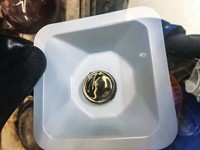Advertisement
Grab your lab coat. Let's get started
Welcome!
Welcome!
Create an account below to get 6 C&EN articles per month, receive newsletters and more - all free.
It seems this is your first time logging in online. Please enter the following information to continue.
As an ACS member you automatically get access to this site. All we need is few more details to create your reading experience.
Not you? Sign in with a different account.
Not you? Sign in with a different account.
ERROR 1
ERROR 1
ERROR 2
ERROR 2
ERROR 2
ERROR 2
ERROR 2
Password and Confirm password must match.
If you have an ACS member number, please enter it here so we can link this account to your membership. (optional)
ERROR 2
ACS values your privacy. By submitting your information, you are gaining access to C&EN and subscribing to our weekly newsletter. We use the information you provide to make your reading experience better, and we will never sell your data to third party members.
Nanomaterials
Nested nanostructures direct fullerene functionalization
Supramolecular structure suggests a strategy for making single isomers of buckyball bis-adducts
by Bethany Halford
April 17, 2021
| A version of this story appeared in
Volume 99, Issue 14

For years, chemists have been kicking around plenty of ideas for adding groups to soccer ball–shaped C60. Some of the work has led to functionalized fullerenes that have applications in solar cells, for example. The challenge is that most syntheses produce a multitude of isomers that have to be painstakingly separated. Max von Delius’s group at Ulm University had been trying to make bis-adducts of C60—fullerenes with substituents added in just two locations—by surrounding the buckyballs with nanohoops. Xavi Ribas’s group at the University of Girona was working on a similar strategy with nanocages. When the chemists saw each other’s work during a scientific meeting, they decided to combine their efforts. Together, their teams made a molecular matryoshka, named for the Russian nesting dolls (Nat. Chem. 2021, DOI: 10.1038/s41557-021-00658-6). The supramolecular structure features a buckyball surrounded by a nanohoop, which is encased in a cage (shown). The structure limits reagents’ access to the fullerene. A cyclopropanation reaction produced a single isomer of a bis-adduct in 90% yield. The same reaction with naked buckyballs gives more than a dozen isomers. The authors suggest that the strategy could be used generally for making bis-adducts of buckyballs, although they note that streamlined reagents work better with the assembly than bulky ones.





Join the conversation
Contact the reporter
Submit a Letter to the Editor for publication
Engage with us on Twitter